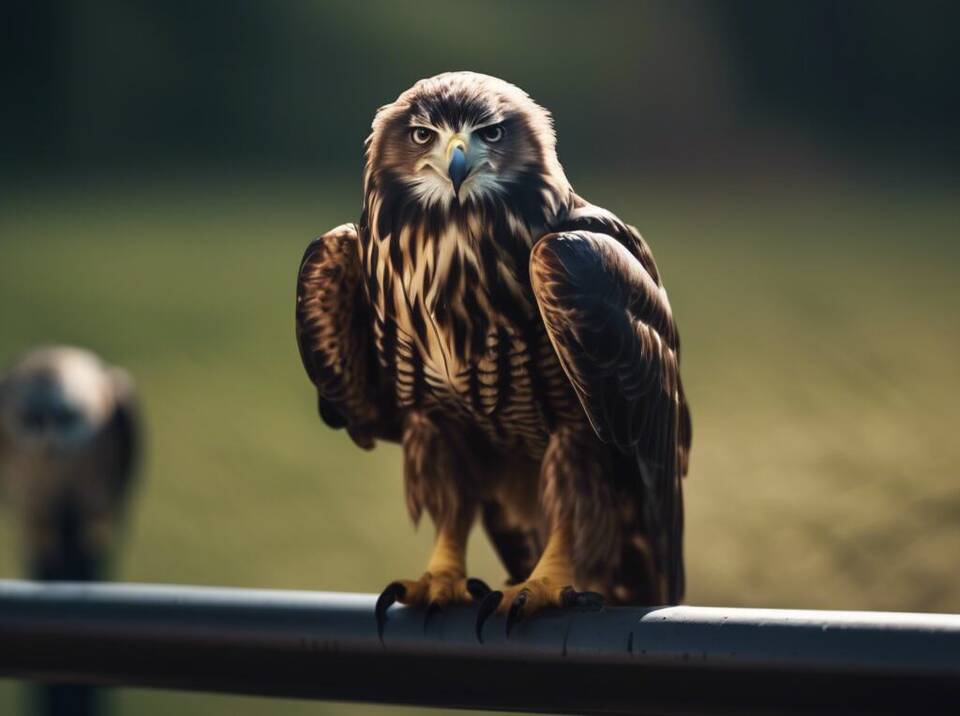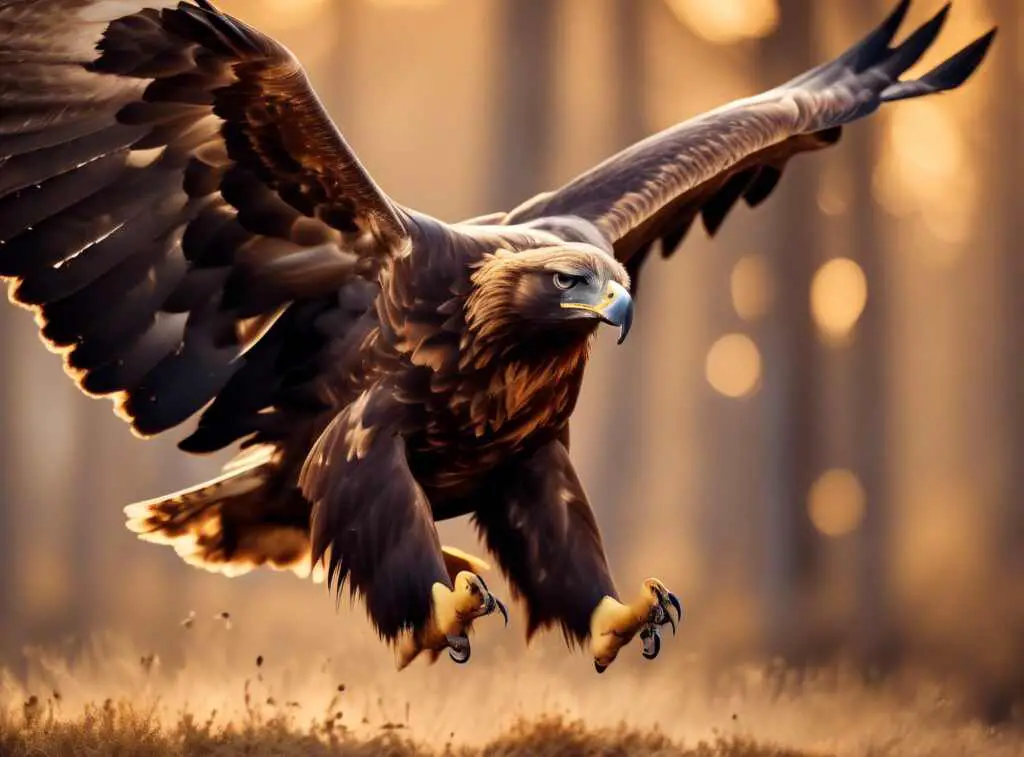Birds of prey, also known as raptors, are fascinating creatures known for their impressive characteristics and behaviors. These birds are carnivorous and possess exceptional hunting abilities that set them apart in the avian world. Let’s delve into the unique traits and behaviors that define these majestic predators.
Table of Contents
Characteristics and Behavior of Birds of Prey
Physical Characteristics:
Birds of prey come in various shapes and sizes, but they share common physical attributes that aid in their hunting prowess. These include sharp talons for grabbing and piercing prey, hooked beaks for tearing flesh, keen eyesight for spotting prey from a distance, and powerful wings for swift and precise flight. The physical characteristics of raptors are perfectly adapted to their predatory lifestyle, allowing them to thrive in diverse habitats.
Types of Birds of Prey:
There are different types of birds of prey, each belonging to specific families. Some well-known raptors include eagles, hawks, falcons, owls, and vultures. Eagles are known for their impressive size and strength, while hawks are agile hunters that soar through the skies in search of prey. Falcons are revered for their incredible speed and maneuverability, making them formidable hunters. Owls, with their silent flight and exceptional nocturnal vision, are masterful night hunters. Vultures, on the other hand, are scavengers that play a crucial role in the ecosystem by cleaning up carrion.
Hunting Behavior:
Birds of prey employ various hunting techniques depending on their species and environment. Some raptors, like eagles and hawks, use their keen eyesight to spot prey from great heights before swooping down to capture it with their powerful talons. Falcons are known for their high-speed dives, striking prey with incredible precision. Owls rely on their silent flight and sharp talons to ambush small mammals under the cover of darkness. Vultures, with their excellent sense of smell, soar high in the sky, using thermals to locate carrion.
Social Behavior:
While most birds of prey are solitary hunters, some species exhibit social behaviors. Certain raptors, like Harris’s hawks, engage in cooperative hunting, where individuals work together to catch prey. This social hunting behavior allows them to take down larger animals that a single bird could not overpower alone. Additionally, birds of prey may form breeding pairs during the mating season, with both parents participating in caring for and protecting their young.
Conservation Status:
Despite their remarkable adaptations and hunting skills, many birds of prey face threats to their survival. Habitat loss, pollution, human encroachment, and illegal hunting pose significant challenges to raptor populations worldwide. Conservation efforts play a crucial role in protecting these majestic birds and ensuring their continued existence in the wild. Organizations and researchers work tirelessly to raise awareness, implement protective measures, and monitor populations to safeguard the future of birds of prey.
Birds of prey are awe-inspiring predators with unique characteristics and behaviors that make them essential components of their ecosystems. Understanding and appreciating these majestic creatures are vital to their conservation and the preservation of our natural heritage. From their physical adaptations to their hunting strategies, raptors exemplify the beauty and complexity of the avian world.
Test Your Knowledge on Birds of Prey!
Think you know everything about these magnificent hunters of the sky? Challenge yourself with our interactive FREE quiz and see how you stack up! Whether you’re a seasoned birdwatcher or just starting out, this quiz is a fun way to test your skills and learn more about birds of prey. Click the link below to get started!

Conservation Efforts for Birds of Prey
Birds of prey play a vital role in maintaining the balance of ecosystems around the world. These magnificent creatures, also known as raptors, are characterized by their keen eyesight, powerful talons, and hooked beaks. They are fierce hunters that primarily feed on other animals, helping to control populations of various species. Unfortunately, many birds of prey face threats such as habitat loss, pollution, and illegal hunting. Conservation efforts are crucial to protect these majestic birds and ensure their continued presence in the wild.
Conservation Programs:
Numerous organizations and initiatives are dedicated to the conservation of birds of prey. One such program is the Raptor Conservation Trust, which focuses on rehabilitating injured birds of prey and raising awareness about the importance of these birds in the ecosystem. The trust also conducts research to better understand the behavior and needs of raptors, contributing valuable insights to conservation efforts.
Habitat Protection:
Preserving the natural habitats of birds of prey is essential for their survival. Many species rely on specific environments, such as forests, grasslands, or wetlands, for nesting and hunting. By establishing protected areas and implementing sustainable land management practices, conservationists can ensure that raptors have suitable places to live and thrive.
Anti-Poaching Measures:
Illegal hunting and poaching pose significant threats to birds of prey worldwide. Poachers target these birds for their feathers, talons, or simply for sport, leading to a decline in their populations. Anti-poaching measures, including stricter law enforcement and education campaigns, are crucial to combat this illegal activity and protect raptors from harm.
Research and Monitoring:
Continuous research and monitoring are key components of effective conservation efforts for birds of prey. Scientists study the behavior, migration patterns, and reproduction of these birds to gather valuable data for conservation planning. By monitoring populations and trends, conservationists can identify potential threats and take timely action to mitigate risks.
Community Engagement:
Engaging local communities in conservation efforts is essential for the long-term protection of birds of prey. Education programs, outreach activities, and community-based projects raise awareness about the importance of raptors and foster a sense of stewardship among residents. By involving communities in conservation initiatives, organizations can gain valuable support and cooperation in safeguarding these magnificent birds.
Conservation efforts for birds of prey are vital to ensure the survival of these magnificent creatures. By implementing programs focused on habitat protection, anti-poaching measures, research, and community engagement, conservationists can make a significant impact in safeguarding raptor populations for future generations to admire and appreciate. Collaborative efforts from governments, organizations, and individuals are essential to preserve the beauty and biodiversity that birds of prey bring to our natural world.
Conclusion
Birds of prey are remarkable creatures with unique characteristics and behaviors that set them apart in the avian world. From their powerful talons and hooked beaks to their exceptional hunting abilities, these birds have adapted over time to become skilled predators. Their keen eyesight, swift flight, and agile movements make them formidable hunters in their ecosystems. Understanding the beauty and importance of birds of prey is crucial for their conservation and protection.
Conservation efforts for birds of prey play a vital role in ensuring the survival of these magnificent creatures. Due to various threats such as habitat loss, pollution, human disturbances, and illegal hunting, many species of birds of prey are facing decline in their populations. Conservationists and wildlife organizations worldwide are working tirelessly to protect these birds and their habitats. Initiatives like habitat restoration, captive breeding programs, and public awareness campaigns are essential in safeguarding the future of birds of prey.
Educating the public about the significance of birds of prey in the ecosystem is a crucial aspect of conservation efforts. These birds play a vital role in maintaining the balance of nature by controlling pest populations and contributing to the health of their habitats. By raising awareness about the importance of preserving these birds and their habitats, conservationists hope to inspire communities to take action to protect these magnificent creatures.
Participating in conservation programs, supporting rehabilitation centers, and advocating for policies that protect birds of prey are concrete ways individuals can contribute to their preservation. Every small effort makes a difference in the conservation of these birds and their habitats. By coming together to protect birds of prey, we can ensure that future generations will have the opportunity to witness the majesty of these incredible creatures in the wild.
Birds of prey are awe-inspiring predators with remarkable characteristics and behaviors that make them unique in the animal kingdom. Understanding and appreciating these birds are essential for their conservation and protection. Conservation efforts play a crucial role in safeguarding the future of birds of prey, and it is up to all of us to become stewards of these magnificent creatures.
By working together to preserve their habitats and raise awareness about their importance, we can ensure that birds of prey will continue to grace our skies for generations to come. Let us cherish and protect these majestic creatures, for they are a symbol of the beauty and diversity of our natural world.


